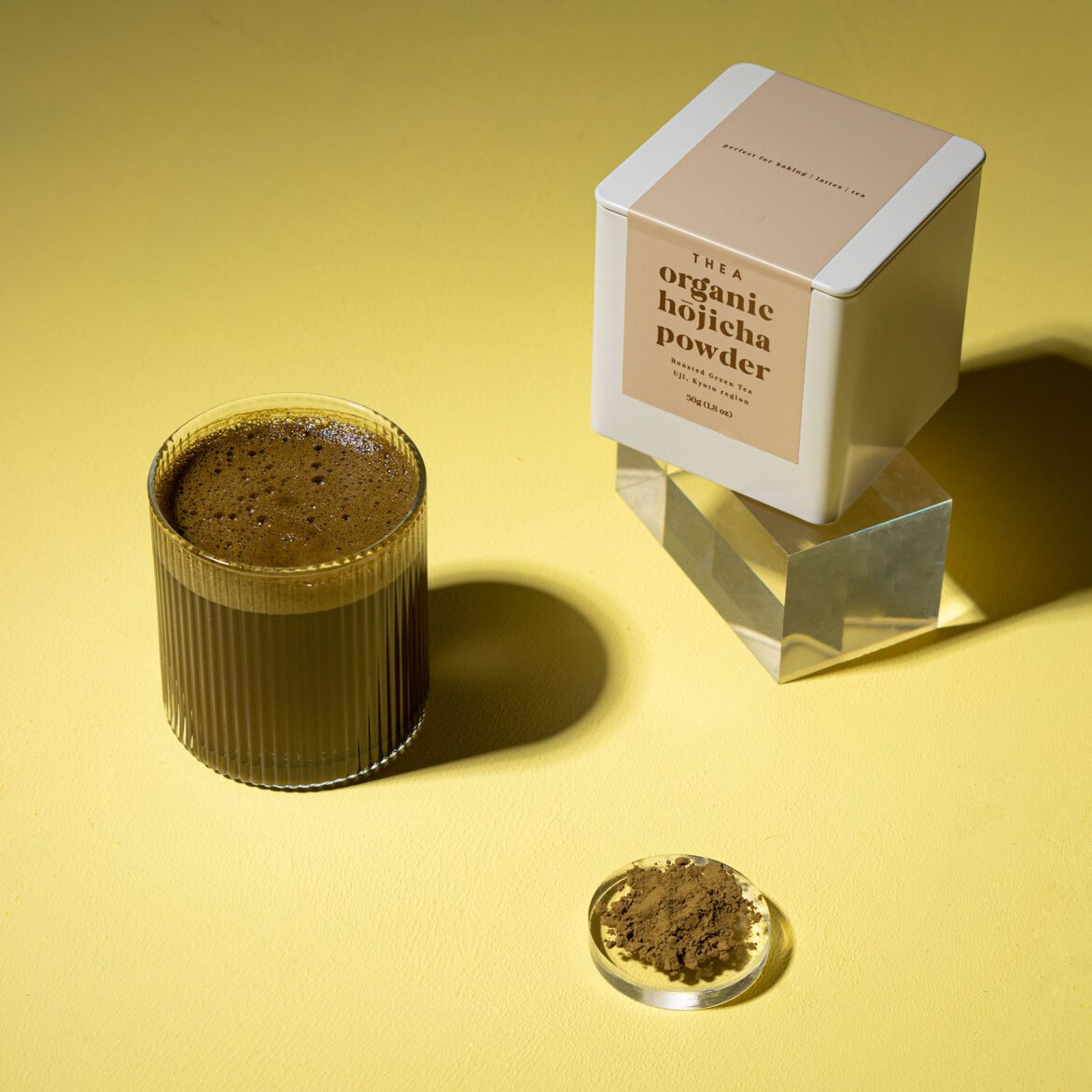Hojicha, with nearly 50 million hits on TikTok already, is the newest matcha trend, rapidly gaining fans, particularly among those looking for a low-caffeine option to their daily brew.
If you’re already a fan of the superfood ingredient that is matcha (commonly recognisable for its vivid green hue), prepare to expand your summer options with the new matcha kid on the block – Hojicha.
Standing out from the matcha crowd for the fact it’s brown (due to its leaves being roasted rather than steamed like matcha), Hojicha’s earthy brown colour is similar to coffee, but that’s where any similarities end.
“One of everyone’s favourite things about Hojicha is how low it is in caffeine. Hojicha’s caffeine is contained at 1.7g per 100g and matcha’s is at 3.2g per 100g whereas coffee has a staggering 40g per 100g. So Hojicha is a great alternative to coffee if you enjoy a morning drink but don’t want the jitters or anxiety that is often associated with it,” says Thea Matcha founder Enna Ye, who, together with cousin May Chen, is dedicated to showcasing matcha in New Zealand, with their business Thea Matcha.

The self-confessed matcha obsessives are more invested than the average Kiwi matcha drinker in the ingredient. After co-founding Thea to put an end to their frustrations at the lack of good matcha in New Zealand, the pair continue to grow their range and Hojicha is the latest addition.
“If you’ve tasted matcha before, you may be thinking that the benefits sound great, but it tasted bitter and grassy,” says Enna.
“The truth is, you’ve probably tried a culinary-grade matcha, which is intended for cooking. If you try a premium quality, you’ll be able to taste the difference – smooth and delicate, with a delightful umami or savoury, full-mouth rounded flavour. The way matcha should be.”
The Kiwi pair has been curating Thea Matcha since 2016, bringing quality matcha flavours, and a touch of matcha education to the market. Used commonly as a drink (hot, cold, and even in cocktails), in smoothies and in baking, matcha has become quite the darling of social media channels, but not every matcha experience is a good one. Like all things in life, quality is key, and this is where Enna and May retain their passion and drive for Thea and sourcing matcha they are proud to showcase.
Sourced directly from a prestige green tea farm in Kyoto (with organic certification with the Japanese Agricultural Standard), Thea Matcha is high quality and May says the difference in taste is obvious.
“With no bitterness and incredible health benefits such as boosting your immunity, being extremely high in antioxidants, and a great alternative to coffee, Thea Matcha offers people the chance to take quality matcha as it should be.”
Thea Matcha is a spring harvest that uses the young leaves found at the top often called first flush or ceremonial, the second flush is found just below.
“Hojicha is fairly different to matcha even though the leaves are from the same green tea plant, as it’s a roasted powder finely milled from the organic green tea leaves. Roasting the leaves over charcoal at 150C gives the powder a nutty and toasty flavour,” says Enna.
“Once roasted, the leaves are finely ground into a silky powder that dissolves easily in water. I recommend making your Hojicha with milk to make it a creamy latte, but it is traditionally drunk as a tea with just water.”

